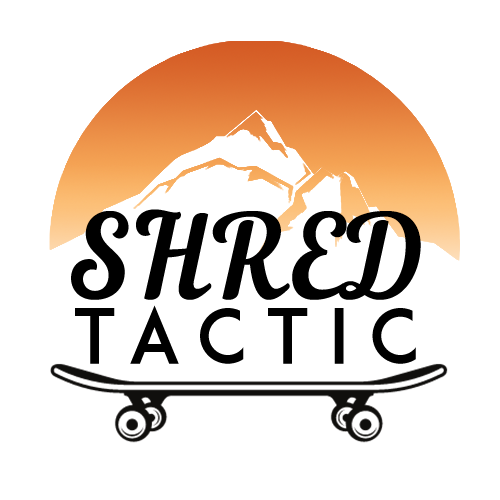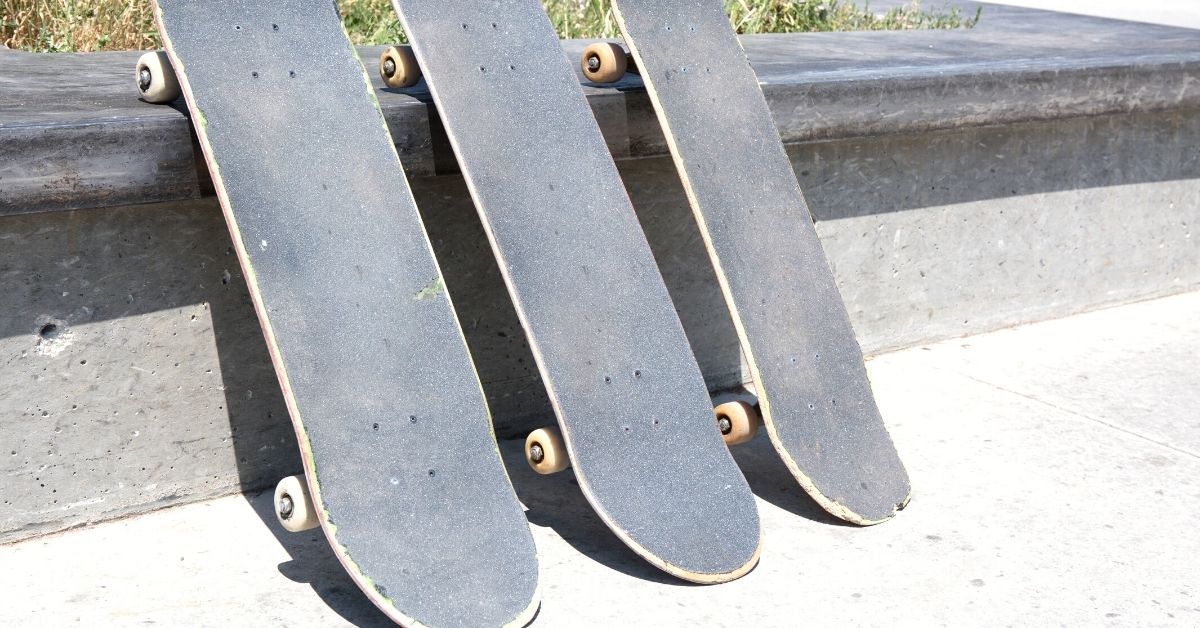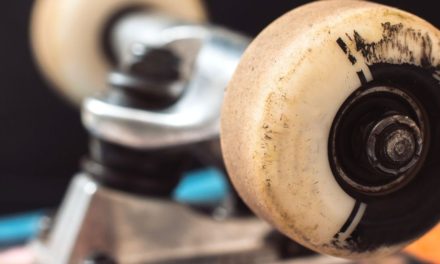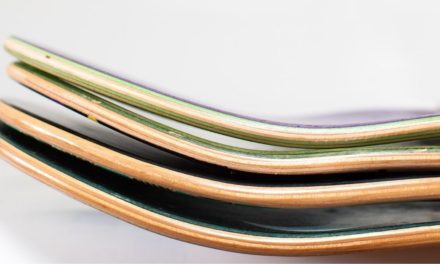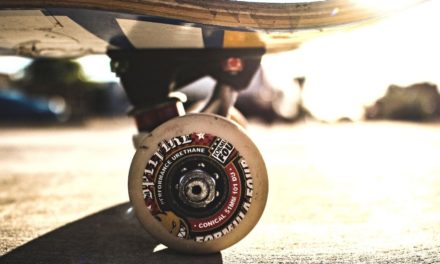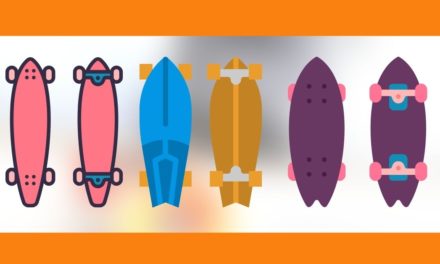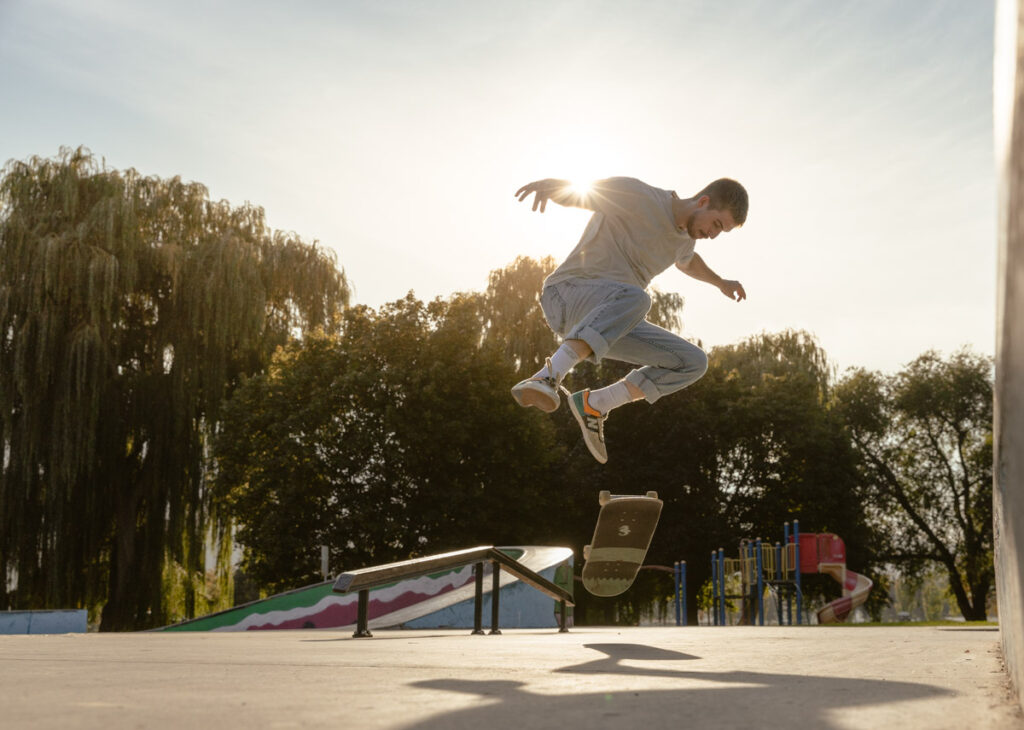After skating the same skateboard for a while, the question of “when should I replace this thing” comes to mind eventually. While a skateboard can still look fine after many years, that doesn’t necessarily mean you should skate it anymore.
Skateboards as a whole rarely need replacing all at once. For example, the deck probably won’t last as long as your trucks, or your wheels won’t last as long as your bearings. Since every component has its own lifespan, it’s important to break down each part of your skateboard rather than replacing the entire thing.
That way, you not only save money but maximize the use of the components you already own.
Now throughout this post, you’ll hear a lot about different skateboard parts like trucks, bushings, decks, and more. If you’re unsure what everything means, the photo below will help clear the air a bit.
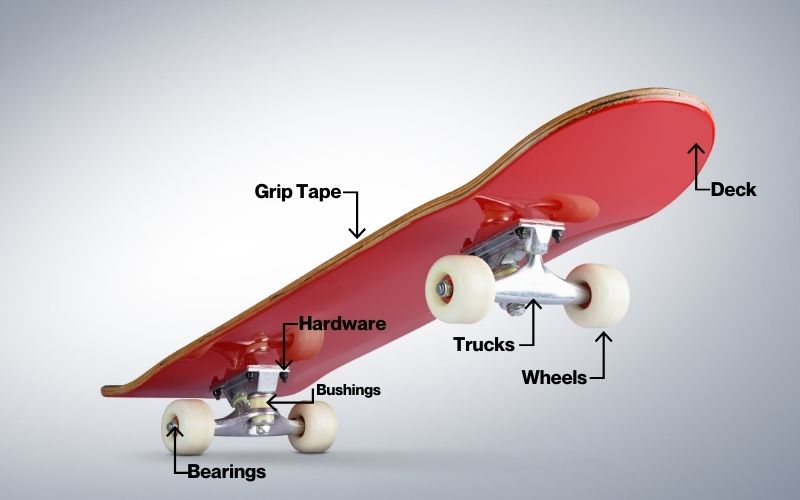
Since every part of your skateboard shouldn’t necessarily need to be replaced simultaneously, I’m going to break down every piece individually. That way, you can better pinpoint what needs to be replaced and get new parts accordingly!
When Should You Replace A Skateboard Deck?
You should replace a skateboard deck if it’s chipped, has razor tail, has become waterlogged, or has lost its shape. These factors drastically affect the deck’s performance, making it harder to land tricks on. Depending on how often you skate, your deck may need replacement every 1-6 months.
The first thing to typically need replacing on your skateboard is the deck. After all, it gets the most abuse out of any other part. The first factor to indicate your deck needs to be replaced is when there are large chips on the nose or tail or bad razor tail.
Both chips and razor tail cause similar issues. Each will make your board have less pop and make tricks feel harder to land than a deck without these issues.
Chips are common if your board has hit a wall straight on at high speeds, transferring the energy into the contact point and splintering some of the wood plies.
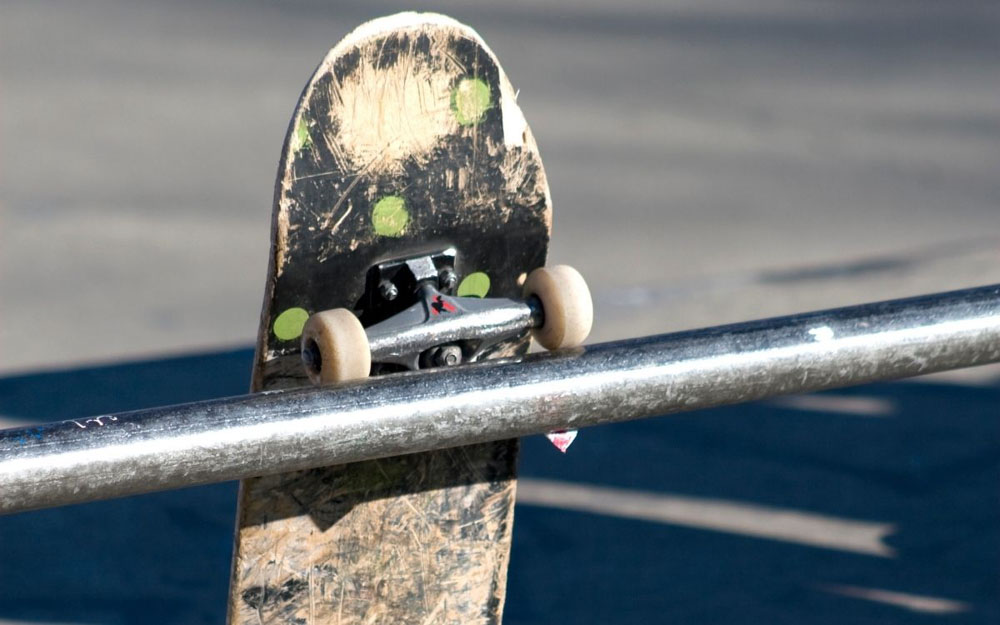
On the other hand, Razor tail is caused over time as your tail gets dragged on the ground. This could be from tail dragging a manual accidentally or just popping a lot of tricks.
Now, as the tail and nose of your deck begin to deteriorate over time, they also become more prone to chipping as the glue weakens within the deck. So in a way, these issues often go hand in hand.
Once your deck has bad razor tail or chips, it’s time to consider getting a new one. A fresh deck will have far more pop, and tricks will suddenly feel way easier than they did on your worn-down deck.
Besides that, the next issue is waterlogging, which will only happen if you skateboard in the rain. As water sits on your skateboard, it absorbs into the wood, weakening the glue and causing the wood to expand and warp. This makes the deck feel worse to ride on and ultimately ruins the pop.
You can typically tell if this is your issue by tapping your board’s tail on the ground. Your deck is likely waterlogged if there is a “soft” or “dulled” sound, as a deck should have a sharp, crisp sound when it hits the ground. With that said, if you don’t skate in the rain, then this probably isn’t an issue.
Lastly, if you’ve had the same deck for years on end, the wood will eventually warp and lose its shape. This can make the nose or tail feel flat or even lessen the concave of your deck.
This makes the deck harder to do tricks with and less enjoyable to ride. If your skateboard deck hasn’t been replaced in years, it’s safe to say it’s time to get a new one. You’ll be blown away by the difference!
When Should You Replace Your Grip Tape?
Grip tape is most often replaced whenever you get a new skateboard deck since you need to get grip tape for a new deck anyways. However, if you have been riding the same board for a long time, such as commuting to work, the grip tape can wear out long before your deck does.
If you notice your grip tape almost feels slippery, it’s safe to assume your grip needs replacing. You can also feel the grip tape with your hand instead. If you don’t notice a fair amount of resistance as you drag your fingers across, your grip tape could probably use an upgrade.
Grip tape is one of the cheapest things to replace on your skateboard since it’s just a few bucks per sheet. To remove your old grip tape, take a razor blade and peel up the edge of it. Then begin pulling back on the grip tape to lift it off your skateboard until the entire sheet is removed.
Once the grip tape is removed, there will be a bit of residue left over that will need to be sanded down. With a piece of sandpaper, go over the entire deck to smooth out any areas. After your decks smooth again, you’re ready to add a new sheet!
When Should You Replace Your Trucks?
You should replace the trucks on your skateboard if they have cracks, bent axles, damaged baseplates, or excessively worn hangers. However, smaller truck components such as the kingpin, bushings, pivot cups, or nuts can be replaced individually, saving you from buying a completely new truck.

Skateboard trucks are one of the most robust components of your entire setup. In most cases, they can last you through multiple setups or several years since you can easily (and cheaply) replace many of the components.
With that said, truck sizes do vary depending on the deck you’re skating. So if you decide to change your deck size, you’ll likely need to replace your trucks too.
Now after skating the same set of trucks for a while, there are some major things that are signs they need replacing. The most major thing is cracks in the hangers or baseplates. These cracks serve as weak points that can easily expand and completely fail while you’re riding.
Although it’s uncommon, a completely broken hanger would mean bad news for you while stomping a trick.
However, cracks in the base plate are equally as bad, but for different reasons. The base plate is responsible for keeping your trucks in contact with your deck (with the help of hardware, of course). If part of your baseplate has cracked, it can weaken the connection in certain parts, giving your truck room to move. This wiggling can make your skateboard start to turn on its own or become hard to control.
Another factor that can cause your skateboard to become more difficult to control is if your axels get bent. This is pretty hard to do, but it’s not impossible if your wheel hits an edge at high speed, or from your board tumbling after a bail. A bent axel will change how your wheel is oriented and affect the overall performance of your board. In that case, you will need to get new trucks to fix the issue.
Finally, after skating the same set of trucks for a while, the hangers can get excessively worn to the axle. Once your axle is exposed in the hanger, every grind you do will also start to wear down the axle too. Therefore weakening the strength of that very important piece that’s holding your wheels on your skateboard.
So if you see your axle, it’s time to get a new set of trucks because there ain’t no fixing that.
When Should You Replace Your Bushings?
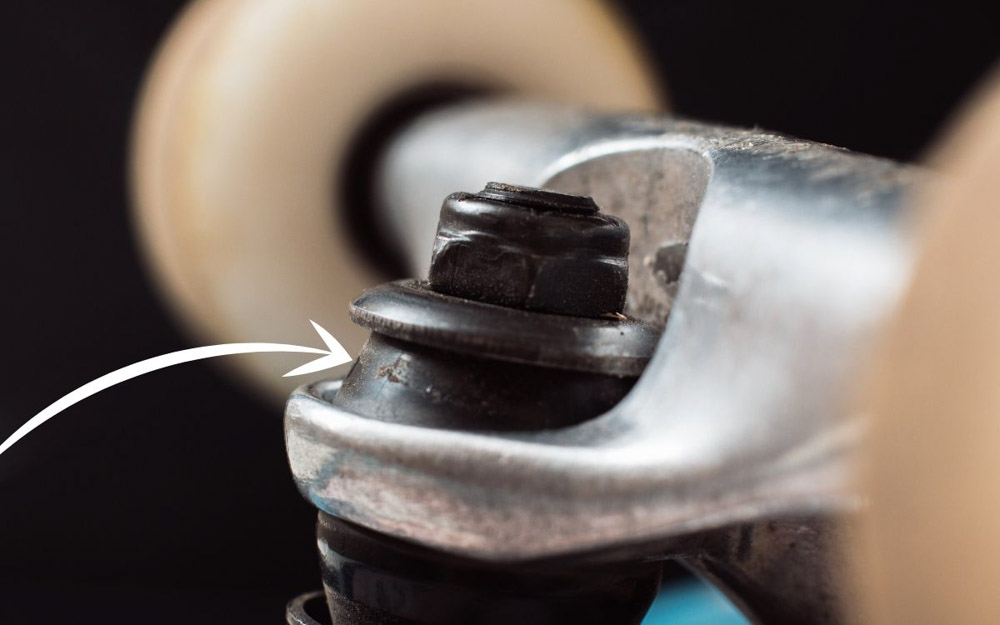
There are a few components within your trucks that you can easily replace as they wear. The most major of these pieces are the bushings. The bushings control how your trucks rotate and pivot while also maintaining the stiffness of your trucks. Unfortunately, they can begin to crack after a while and cause your trucks to feel wobbly, making you more prone to wheel bite.
You can check in on your bushings by looking in the center of your trucks. The colorful rubber pieces you see are the bushings. If you notice any cracks or flakes coming off of the bushing, it’s a clear sign that they’re blown out.
Once your bushings are blown out, your trucks won’t turn as smoothly or feel more wobbly regardless of how much you tighten your trucks. Luckily you can buy bushing replacement kits that are either brand specific to your truck or universal fit.
The nice part about this is you can take the time to choose a new bushing stiffness depending on your style of skating!
Once you notice your bushings need replacing, it’s up to you how fast you want to replace them. I had skated on blown-out bushings for months before and never had a big problem. However, with that said, it will limit the performance of your trucks.
What About Your Hardware?
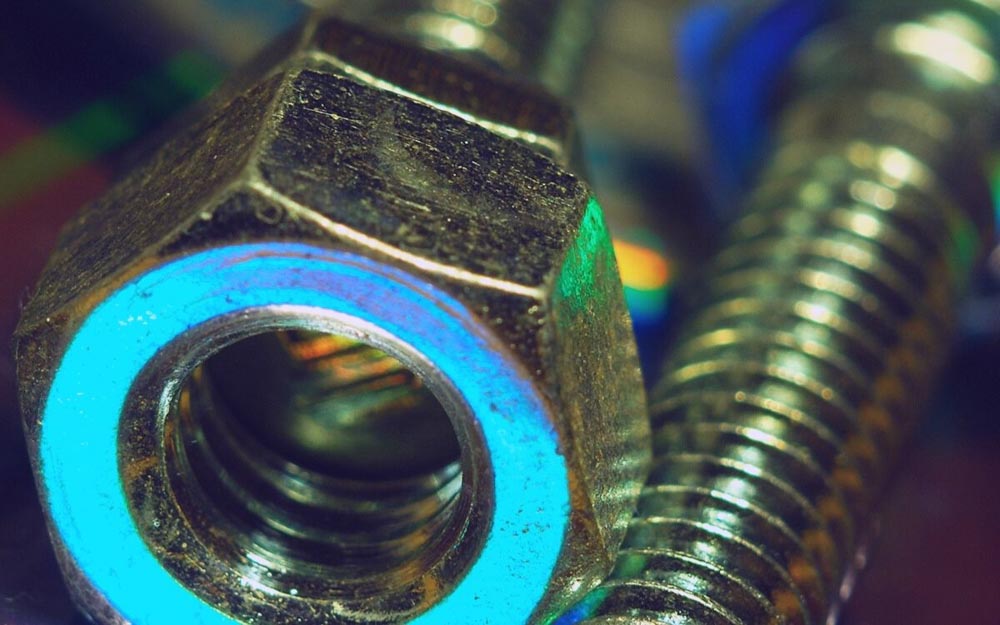
Skateboard hardware is one thing that’s a little less obvious when figuring out if it needs replacing. In most cases, I would recommend getting a new set of hardware each time you buy a new deck or a new set of trucks if you go through decks once a month.
Hardware is very durable since it sees the least impact compared to other components. However, if you have been using the same hardware set for multiple setups, some of the bolts may become stripped or the nuts rounded off. In that case, it would be time to replace your hardware.
Otherwise, I buy a new set of hardware for every other deck. That way, I only have to purchase hardware about twice a year.
When Should You Replace Your Skateboards Wheels?
Skateboard wheels should be replaced when there is excessive wear, major flat spots, or coning. Each of these issues affects how the wheel performs, causing you to sacrifice speed, traction, or, most importantly, comfort while riding.
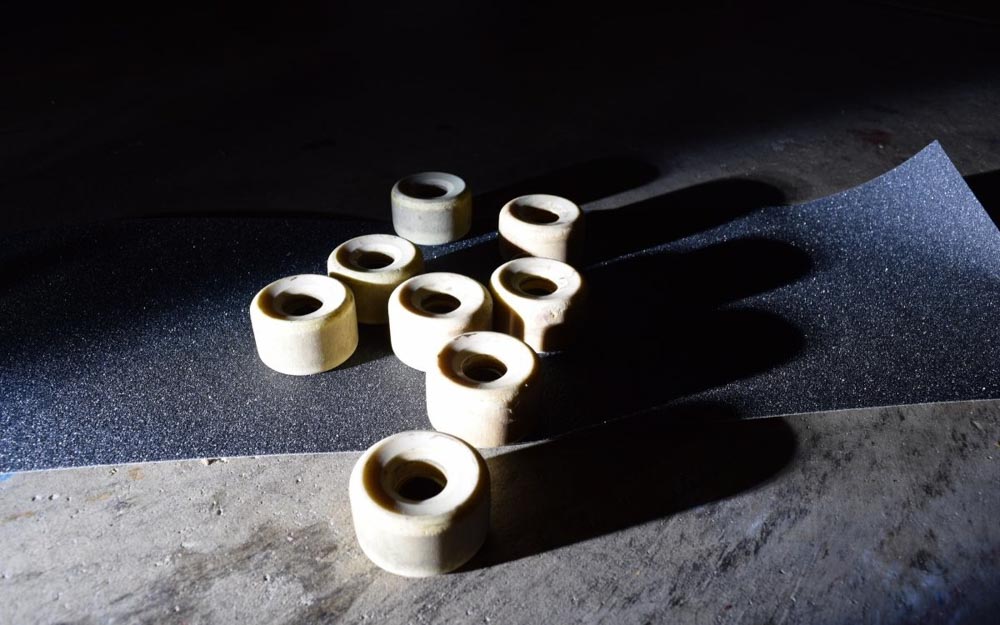
Over time your wheels become more worn down, shrinking in size and contact area. Besides the general overall wear of your wheel, flat spots and coning are the two most common issues you’ll face with wheels.
Flat spots are exactly what they sound like; a flat part on your wheel created from excessive drag in one part. This can happen from power sliding or from hitting a rock, causing your wheel to jam while you’re still moving.
Yes, that has happened to me. Yes, I was sad.
Flat spots can vary in size, and smaller ones will usually work themselves out over time. This is because the flat edges create more friction with the ground, making them smooth back to the wheel’s original shape. However, major flat spots won’t do that as quickly.
So depending on the size of your flat spot, you can decide to put up with it until it smooths out (which could be weeks) or get a new set of wheels. If there is a major amount of vibration from the flat spot and it’s affecting how you skate, I would suggest buying a new set of wheels.
The second type of wear is called coning, which is when the outer edge of your wheel wears faster than the inner edge. This makes your wheel have a downwards taper toward the outside. Coning happens naturally over time as you pivot your tricks or slide your skateboard.
Although not a major issue, it will affect the contact patch of your wheel, often leaving you with less traction. Especially when trying to turn tightly, it’s pretty common to wash out once your wheels have become coned.
The free solution is to take off your wheels and flip them the other way. The larger part of the wheel will be on the outside, offering slightly more grip on tight turns than before. Eventually, this side will wear down too, and your coning issue will be solved. Therefore you likely won’t need to replace your wheels for a while in this case.
However, if you have left the coning too long and there is a steep taper between the front and back of the wheel, it is best to buy a new set. Flipping the wheel will only work if the coning is subtle, as you can stay on top of the wear more.
Your skateboard wheels can last you for years if you aren’t skating on them regularly. After all, they don’t deteriorate when you aren’t skating them, so you don’t have much to worry about. With that said, you may want to replace your wheels if you decide you want a different hardness or wheel size to suit a newfound skating style.
When Should You Replace Your Skateboards Bearings?
Skateboard bearings typically last for a long time when regularly cleaned. However, bearings should be replaced if they no longer spin smoothly after cleaning and lubrication or if the shields have fallen off.
Bearings are the small yet essential piece to your setup that you can’t do without. As long as you keep your bearings cleaned and well-lubricated, they will keep you rolling for years to come.
However, if you have skated frequently in the rain, this can cause your bearings to rust if they weren’t properly dried and lubed afterward. Once your bearings begin to rust, it isn’t easy to get them back to working their best again. That’s because the balls in your bearing begin to bind and don’t roll as smoothly as before. This makes for a less smooth ride and potentially an unsafe one if your bearing seizes up while you’re skating.
Luckily you can easily tell if your bearings are rusted. By looking at the outer and inner race (the metal rings you see from the side of your bearing), you can get an idea of how things are looking. If the races look clean and silver, you probably don’t have a rusting issue. However, if they have visible rust or look a bit brown, it’s time for a deeper inspection.
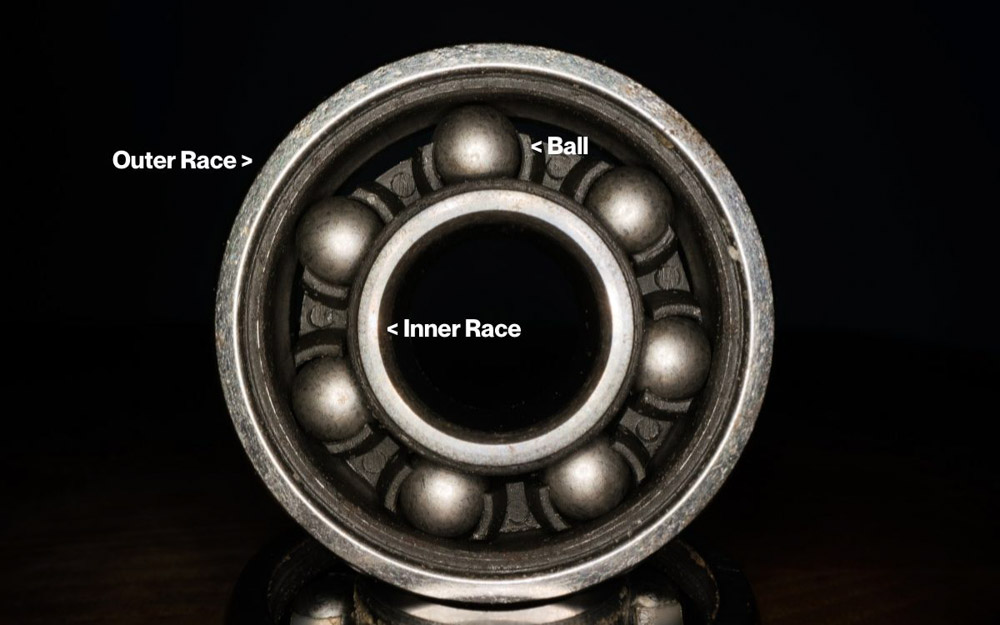
To take a closer look, take your wheel off your skateboard and slide a razor blade or thumbtack under the shield of the bearing. Then pry up to lift the shield off and expose the bearing balls inside. If your bearings are rusted, you’ll see it on the balls, or they’ll look mostly brown. When you spin your wheel, it probably will make a grinding sound and not spin freely for long either.
If this sounds like your bearings, that means it’s time to replace them. Unfortunately, you cannot buy individual skateboard bearings, so you have to buy a complete set. Luckily, something like Bones Reds are super cheap but still roll fast and are long-lasting!
Just remember once you get a new set to clean and lube them properly regularly! At the very least, a few drops of Bones Speed Cream will keep your bearings in tip-top shape. That way, you can keep using the same set of bearings for many setups to come!
So What Kind Of Lifespan Does Your Skateboard Have?
The lifespan of each part of your skateboard varies drastically, so it’s much more cost-effective to figure out what individual parts need replacing. That way you can keep your skateboard feeling dialed, without spending a few hundred bucks on a new setup every time.
Although it’s best to look at the parts of your skateboard and judge for yourself based on wear, here are a few general guidelines for how long before things need replacing.
- Decks – 1-6 months
- Trucks – 12+ months
- Bushings – 3-8 months
- Hardware – 12+ months
- Wheels – 8-12 months
- Bearings – 12+ months (if cared for)
Keep in mind that this timeline may vary depending on how often you skate. These estimates will be more accurate for a beginner to intermediate skater than for more advanced skaters.
So now that you know how to tell when your skateboard needs to be replaced, you can get an accurate gauge of how your current setup is looking!
Happy Shredding!
Brendan 🙂
